MITOSIS
Mitosis is a part of the cell cycle in which chromosomes in a cell nucleus are separated into two identical sets of chromosomes, each in its own nucleus. In general, mitosis (division of the nucleus) is often followed by cytokinesis, which divides the cytoplasm, organelles and cell membrane into two new cells containing roughly equal shares of these cellular components. Mitosis and cytokinesis together define the mitotic (M) phase of an animal cell cycle—the division of the mother cell into two daughter cells, genetically identical to each other and to their parent cell.
The process of mitosis is divided into stages corresponding to the completion of one set of activities and the start of the next. These stages are prophase, prometaphase, metaphase, anaphase, and telophase. During mitosis, the chromosomes, which have already duplicated, condense and attach to fibers that pull one copy of each chromosome to opposite sides of the cell. The result is two genetically identical daughter nuclei. The cell may then divide by cytokinesis to produce two daughter cells.[2] Producing three or more daughter cells instead of normal two is a mitotic error called tripolar mitosis or multipolar mitosis (direct cell triplication / multiplication). Other errors during mitosis can induce apoptosis (programmed cell death) or cause mutations. Certain types of cancer can arise from such mutations.[4]
Mitosis occurs only in eukaryotic cells and the process varies in different organisms.[5] For example, animals undergo an "open" mitosis, where the nuclear envelope breaks down before the chromosomes separate, while fungi undergo a "closed" mitosis, where chromosomes divide within an intact cell nucleus.[6] Furthermore, most animal cells undergo a shape change, known as mitotic cell rounding, to adopt a near spherical morphology at the start of mitosis.
(Wikipedia)
NOW, LET´S WATCH THIS VIDEO TO SEE CHROMOSOMES MOTION DURING MITOSIS
IN THE PREVIOUS VIDEO IS DIFFICULT TO SEE THE STAGES OF MITOSIS.
Now, read carefully the explanation below to fully understand what happen in each mitosis' phase.
What Are the Phases of Mitosis?
Mitosis consists of five morphologically distinct phases: prophase, prometaphase, metaphase, anaphase, and telophase. Each phase involves characteristic steps in the process of chromosome alignment and separation. Once mitosis is complete, the entire cell divides in two by way of the process called cytokinesis (Figure 1).
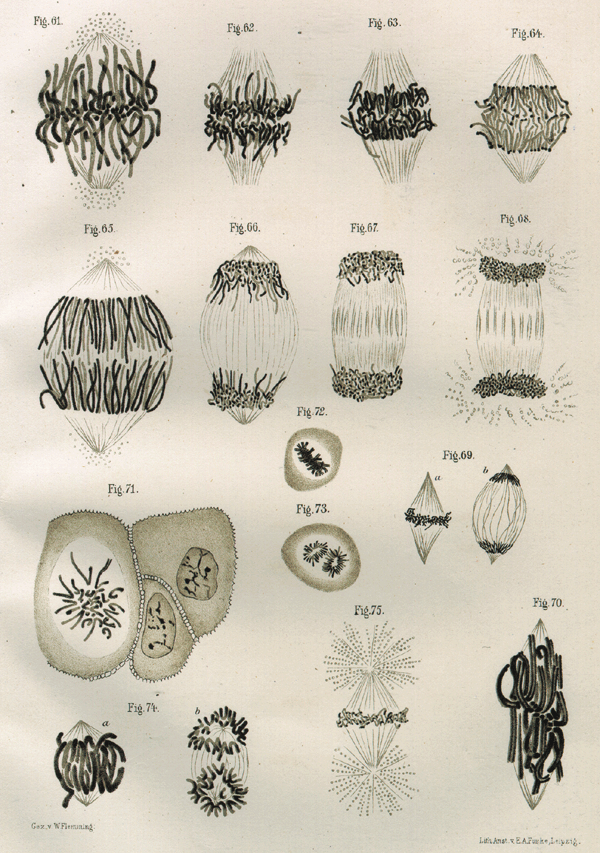
Figure 1: Drawing of chromosomes during mitosis by Walther Flemming, circa 1880
This illustration is one of more than one hundred drawings from Flemming's \"Cell Substance, Nucleus, and Cell Division.\" Flemming repeatedly observed the different forms of chromosomes leading up to and during cytokinesis, the ultimate division of one cell into two during the last stage of mitosis.
© 2001 Nature Publishing Group Paweletz, N. Walther Flemming: pioneer of mitosis research. Nature Reviews Molecular Cell Biology 2, 72 (2001). All rights reserved. 
What Happens during Prophase?
Prophase is the first stage in mitosis, occurring after the conclusion of the G2portion of interphase. During prophase, the parent cell chromosomes — which were duplicated during S phase — condense and become thousands of times more compact than they were during interphase. Because each duplicated chromosome consists of two identical sister chromatids joined at a point called the centromere, these structures now appear as X-shaped bodies when viewed under a microscope. Several DNA binding proteins catalyze the condensation process, including cohesin and condensin. Cohesin forms rings that hold the sister chromatids together, whereas condensin forms rings that coil the chromosomes into highly compact forms.
The mitotic spindle also begins to develop during prophase. As the cell's two centrosomes move toward opposite poles, microtubules gradually assemble between them, forming the network that will later pull the duplicated chromosomes apart.
What Happens during Prometaphase?
When prophase is complete, the cell enters prometaphase — the second stage of mitosis. During prometaphase, phosphorylation of nuclear lamins by M-CDK causes the nuclear membrane to break down into numerous small vesicles. As a result, the spindle microtubules now have direct access to the genetic material of the cell.
What Happens during Metaphase and Anaphase?
As prometaphase ends and metaphase begins, the chromosomes align along the cell equator. Every chromosome has at least two microtubules extending from its kinetochore — with at least one microtubule connected to each pole. At this point, the tension within the cell becomes balanced, and the chromosomes no longer move back and forth. In addition, the spindle is now complete, and three groups of spindle microtubules are apparent. Kinetochore microtubules attach the chromosomes to the spindle pole; interpolar microtubules extend from the spindle pole across the equator, almost to the opposite spindle pole; and astral microtubules extend from the spindle pole to the cell membrane.
Metaphase leads to anaphase, during which each chromosome's sister chromatids separate and move to opposite poles of the cell. Enzymatic breakdown of cohesin — which linked the sister chromatids together during prophase — causes this separation to occur. Upon separation, every chromatid becomes an independent chromosome. Meanwhile, changes in microtubule length provide the mechanism for chromosome movement. More specifically, in the first part of anaphase — sometimes called anaphase A — the kinetochore microtubules shorten and draw the chromosomes toward the spindle poles. Then, in the second part of anaphase — sometimes called anaphase B — the astral microtubules that are anchored to the cell membrane pull the poles further apart and the interpolar microtubules slide past each other, exerting additional pull on the chromosomes (Figure 2).

Figure 2: Types of microtubules involved in mitosis
During mitosis, several types of microtubules are active. The motor proteins associated with the interpolar microtubules drive the assembly of the spindle. Note the other types of microtubules involved in anchoring the spindle pole and pulling apart the sister chromatids.
© 2013 Nature Education All rights reserved. 
What Happens during Telophase?
During telophase, the chromosomes arrive at the cell poles, the mitotic spindle disassembles, and the vesicles that contain fragments of the original nuclear membrane assemble around the two sets of chromosomes. Phosphatases then dephosphorylate the lamins at each end of the cell. This dephosphorylation results in the formation of a new nuclear membrane around each group of chromosomes.
When Do Cells Actually Divide?
Cytokinesis is the physical process that finally splits the parent cell into two identical daughter cells. During cytokinesis, the cell membrane pinches in at the cell equator, forming a cleft called the cleavage furrow. The position of the furrow depends on the position of the astral and interpolar microtubules during anaphase.
The cleavage furrow forms because of the action of a contractile ring of overlapping actin and myosin filaments. As the actin and myosin filaments move past each other, the contractile ring becomes smaller, akin to pulling a drawstring at the top of a purse. When the ring reaches its smallest point, the cleavage furrow completely bisects the cell at its center, resulting in two separate daughter cells of equal size (Figure 3).
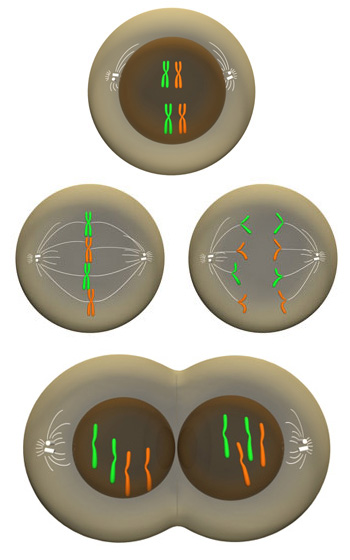
Figure 3: Mitosis: Overview of major phases
The major stages of mitosis are prophase (top row), metaphase and anaphase (middle row), and telophase (bottom row).
© 2009 Nature Education All rights reserved. 
Conclusion
Mitosis is the process of nuclear division, which occurs just prior to cell division, or cytokinesis. During this multistep process, cell chromosomes condense and the spindle assembles. The duplicated chromosomes then attach to the spindle, align at the cell equator, and move apart as the spindle microtubules retreat toward opposite poles of the cell. Each set of chromosomes is then surrounded by a nuclear membrane, and the parent cell splits into two complete daughter cells.
Watch this video for a summary of mitosis
MEIOSIS
Watch this video for a summary of meiosis
FIRST THING TO POINT OUT AT:
MAIN DIFFERENCES BETWEEN MIOSIS AND MEIOSIS
Like mitosis, meiosis is a form of eukaryotic cell division. However, these two processes distribute genetic material among the resulting daughter cells in very different ways. Mitosis creates two identical daughter cells that each contain the same number of chromosomes as their parent cell. In contrast, meiosis gives rise to four unique daughter cells, each of which has half the number of chromosomes as the parent cell. Because meiosis creates cells that are destined to become gametes (or reproductive cells), this reduction in chromosome number is critical — without it, the union of two gametes during fertilization would result in offspring with twice the normal number of chromosomes!
Apart from this reduction in chromosome number, meiosis differs from mitosis in yet another way. Specifically, meiosis creates new combinations of genetic material in each of the four daughter cells. These new combinations result from the exchange of DNA between paired chromosomes. Such exchange means that the gametes produced through meiosis exhibit an amazing range of genetic variation.
Finally, unlike mitosis, meiosis involves two rounds of nuclear division, not just one. Despite this fact, many of the other events of meiosis are similar to those that occur in mitosis. For example, prior to undergoing meiosis, a cell goes through an interphase period in which it grows, replicates its chromosomes, and checks all of its systems to ensure that it is ready to divide. Like mitosis, meiosis also has distinct stages called prophase, metaphase, anaphase, and telophase. A key difference, however, is that during meiosis, each of these phases occurs twice — once during the first round of division, called meiosis I, and again during the second round of division, called meiosis II.
PHASES OF MEIOSIS
What happens during meiosis I?
As previously mentioned, the first round of nuclear division that occurs during the formation of gametes is called meiosis I. It is also known as the reduction division because it results in cells that have half the number of chromosomes as the parent cell. Meiosis I consists of four phases: prophase I, metaphase I, anaphase I, and telophase I.
Prophase I
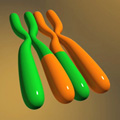
Figure 1: Recombination is the exchange of genetic material between homologous chromosomes.
During prophase I, the chromosomes condense and become visible inside the nucleus. Because each chromosome was duplicated during the S phase that occurred just before prophase I, each now consists of two sister chromatids joined at the centromere. This arrangement means that each chromosome has the shape of an X.
Once this chromosomal condensation has occurred, the members of each chromosome pair (called homologous chromosomes, because they are similar in size and contain similar genes), align next to each other. At this point, the two chromosomes in each pair become tightly associated with each other along their lengths in a process called synapsis. Then, while the homologous chromosomes are tightly paired, the members of each pair trade adjacent bits of DNA in a process called crossing over, also known as recombination (Figure 1). This trading of genetic material creates unique chromosomes that contain new combinations of alleles.
At the end of prophase I, the nuclear membrane finally begins to break down. Outside the nucleus, the spindle grows out from centrosomes on each side of the cell. As in mitosis, the microtubules of the spindle are responsible for moving and arranging the chromosomes during division.
Metaphase I

Figure 2: Near the end of metaphase I, the homologous chromosomes align on the metaphase plate.
At the start of metaphase I, microtubules emerge from the spindle and attach to the kinetochore near the centromere of each chromosome. In particular, microtubules from one side of the spindle attach to one of the chromosomes in each homologous pair, while microtubules from the other side of the spindle attach to the other member of each pair. With the aid of these microtubules, the chromosome pairs then line up along the equator of the cell, termed the metaphase plate (Figure 2).
Anaphase I

Figure 3: During anaphase I, the homologous chromosomes are pulled toward opposite poles of the cell.
During anaphase I, the microtubules disassemble and contract; this, in turn, separates the homologous chromosomes such that the two chromosomes in each pair are pulled toward opposite ends of the cell (Figure 3). This separation means that each of the daughter cells that results from meiosis I will have half the number of chromosomes of the original parent cell after interphase. Also, the sister chromatids in each chromosome still remain connected. As a result, each chromosome maintains its X-shaped structure.
Telophase I
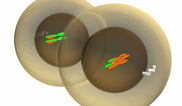
Figure 4: Telophase I results in the production of two nonidentical daughter cells, each of which has half the number of chromosomes of the original parent cell.
As the new chromosomes reach the spindle during telophase I, the cytoplasm organizes itself and divides in two. There are now two cells, and each cell contains half the number of chromosomes as the parent cell. In addition, the two daughter cells are not genetically identical to each other because of the recombination that occurred during prophase I (Figure 4).
Interkinesis
At this point, the first division of meiosis is complete. The cell now rests for a bit before beginning the second meiotic division. During this period, called interkinesis, the nuclear membrane in each of the two cells reforms around the chromosomes. In some cells, the spindle also disintegrates and the chromosomes relax (although most often, the spindle remains intact). It is important to note, however, that no chromosomal duplication occurs during this stage.
What happens during meiosis II?
During meiosis II, the two cells once again cycle through four phases of division. Meiosis II is sometimes referred to as an equational division because it does not reduce chromosome number in the daughter cells — rather, the daughter cells that result from meiosis II have the same number of chromosomes as the "parent" cells that enter meiosis II. (Remember, these "parent" cells already have half the number of chromosomes of the original parent cell thanks to meiosis I.)
Prophase II
As prophase II begins, the chromosomes once again condense into tight structures, and the nuclear membrane disintegrates. In addition, if the spindle was disassembled during interkinesis, it reforms at this point in time.
Metaphase II
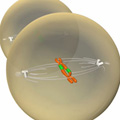
Figure 5: During metaphase II, the chromosomes align along the cell's equatorial plate.
The events of metaphase II are similar to those of mitotic metaphase — in both processes, the chromosomes line up along the cell's equatorial plate, also called the metaphase plate, in preparation for their eventual separation (Figure 5).
Anaphase II

Figure 6: Anaphase II involves separation of the sister chromatids.
During anaphase II, microtubules from each spindle attach to each sister chromatid at the kinetochore. The sister chromatids then separate, and the microtubules pull them to opposite poles of the cell. As in mitosis, each chromatid is now considered a separate chromosome (Figure 6). This means that the cells that result from meiosis II will have the same number of chromosomes as the "parent" cells that entered meiosis II.
Telophase II
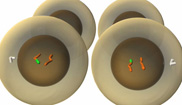
Figure 7: Telophase II results in the production of four daughter cells.
Finally, in telophase II, nuclear membranes reform around the newly separated chromosomes, which relax and fade from view. As soon as the cytoplasm divides, meiosis is complete. There are now four daughter cells — two from each of the two cells that entered meiosis II — and each daughter cell has half the normal number of chromosomes (Figure 7). Each also contains new mixtures of genes within its chromosomes, thanks to recombination during meiosis I.
Why is meiosis important?
Meiosis is important because it ensures that all organisms produced via sexual reproduction contain the correct number of chromosomes. Meiosis also produces genetic variation by way of the process of recombination. Later, this variation is increased even further when two gametes unite during fertilization, thereby creating offspring with unique combinations of DNA. This constant mixing of parental DNA in sexual reproduction helps fuel the incredible diversity of life on Earth.
(Nature)
WATCH THIS YOUTUBE VIDEO ABOUT MITOSIS
https://www.youtube.com/watch?v=xsrH050wnIA
THEN, FILL IN THIS HANDOUT
https://drive.google.com/open?id=1yLdNWlrdE2MH0WDR_I8WOQCYgbW4Q8I7